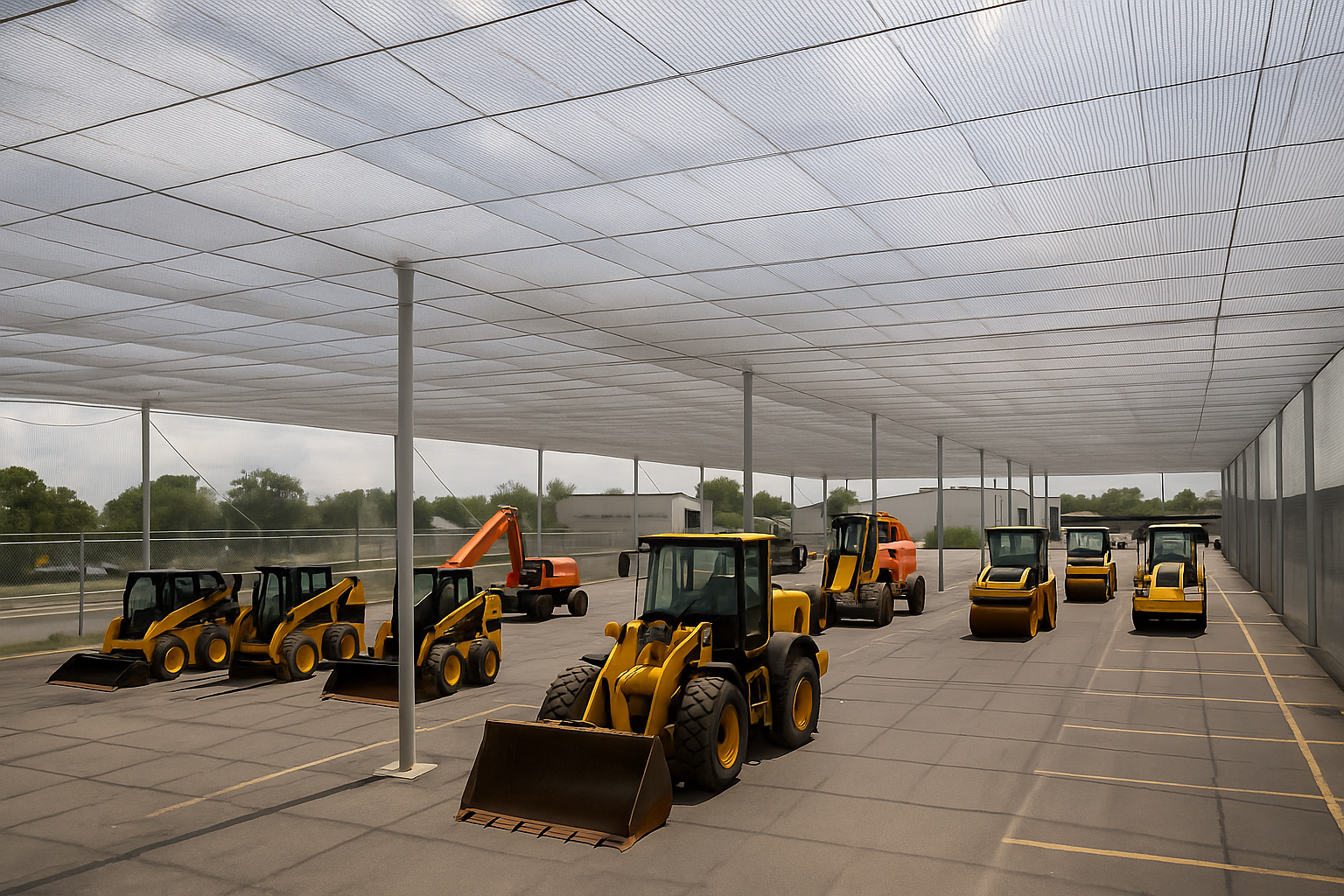How Industrial Facilities Can Prepare for Peak Hail Season
Updated
August 11, 2025
•
5
min read

From manufacturing plants to distribution hubs, industrial facilities face growing risks from severe weather—especially hail. Large rooftops, loading areas, and outdoor equipment leave businesses exposed to costly damage, operational downtime, and insurance spikes. As hail season approaches, it's critical to take proactive steps to protect your assets, lower insurance premiums, minimize risk, and keep operations running smoothly.
📆 When Is Hail Season for Industrial Operations?
Hail season generally runs from March through September, with the worst storms occurring in spring and early summer. These are historically the peak hail periods, but some of the most damaging storms have occurred during off-peak times or late in the season—as climate change makes severe weather patterns more unpredictable this is an increasingly common trend. Regional patterns include:
- Central U.S. (TX, OK, CO, KS): March–June
- Great Plains & Midwest: April–August
- Mountain States: April–July
If your facility operates in a hail-prone region, plan for hail protection measures to be in place before spring.
Learn More >> Is your facility in a hail-prone state?
⚠️ Why Industrial Facilities Are Especially Vulnerable
Industrial properties often include:
- Exposed rooftop HVAC and electrical systems
- Outdoor equipment, inventory, or fleet vehicles
- Uncovered employee and visitor parking
- Large metal roof spans prone to denting or leaks
Even a single hailstorm can cause six- or seven-figure damages—from cracked skylights to damaged specialized equipment or vehicles —and in many cases, insurance coverage gaps or high deductibles.
✅ 6 Steps to Prepare Your Facility for Hail Season
1. Install Protective Systems Like Hail Netting
Permanent hail netting systems are a proven way to shield:
- Fleet parking areas and outdoor staging yards
- Valuable inventory stored outside
- Employee and customer vehicles
Hail No®’s commercial-grade hail netting is engineered to absorb and deflect hail impact without interfering with day-to-day operations. Source: Hail No
One facility reduced its insurance premiums by 40%, recouping the full installation cost in under two years. Source: Hail No
Learn More >> Protecting Industrial Plants from Hail Damage: A Guide
2. Review Your Commercial Insurance Coverage
Before hail season:
- Check your policy for hail exclusions or deductibles
- Evaluate business interruption coverage if production halts
- Ask your broker if adding hail protection qualifies for rate discounts
Related Article >> Can Hail Protection Lower Your Insurance Premiums?
3. Conduct a Facility Risk Assessment
Inspect your property for vulnerable areas:
- Aging HVAC units, vents, skylights, or roof-mounted solar
- Outdoor generators, piping, or sensitive machinery
- Vehicle or trailer yards with high-value assets
Document everything and consider relocation or protection strategies for at-risk equipment.
4. Strengthen Emergency Response Plans
Ensure your team is ready for hail alerts:
- Assign response roles for on-site safety and facility inspections
- Establish communication protocols for plant management and security
- Create a post-storm assessment checklist
5. Invest in Advanced Weather Monitoring Tools
For time-sensitive operations, having access to real-time hail alerts and radar-based forecasting tools can help you:
- Move inventory indoors
- Shut down equipment preemptively
- Minimize losses and downtime
6. Maintain Drainage and Roof Integrity
Even small hail can clog drains or accelerate roof wear. Before peak season:
- Clear roof drains, scuppers, and gutters
- Repair flashing, panels, or membranes
- Schedule preventative roof inspections
🛡️ Hail Protection Is an Investment in Resilience
In an era of increasing weather extremes, industrial facilities can’t afford to leave risk up to chance. Whether you're protecting equipment, maintaining uptime, or avoiding costly repairs, hail netting systems and proactive preparation offer a clear return on investment.
Hail No® customizes hail protection systems for warehouses, distribution centers, and manufacturing sites.
Interested in protecting your facility?